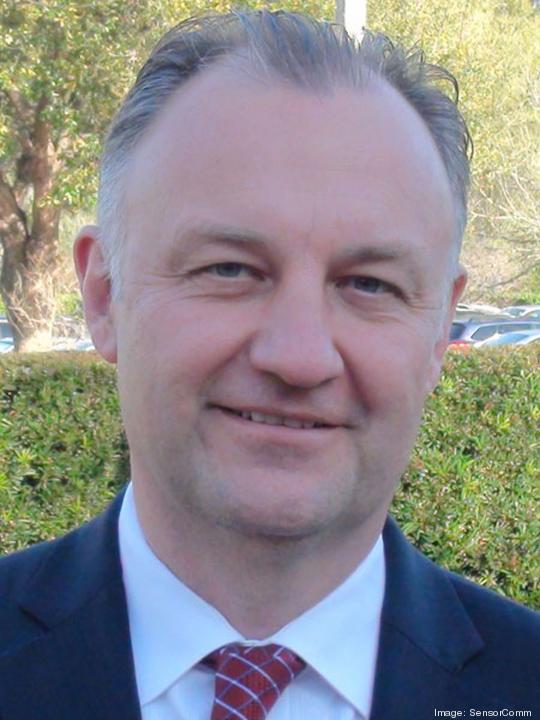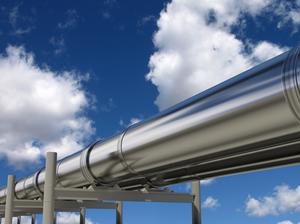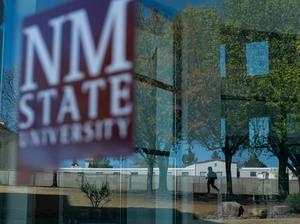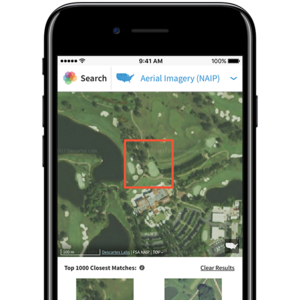
When it comes to energy innovation and technology, emissions from oil and gas operations have been at the forefront of conversations locally and across the country. And a pair of University of New Mexico researchers, as well as a local technology subcontractor, have plans to tackle the issue.
Fernando Garzon and Lok-Kun Tsui, professors in UNM’s Department of Chemical and Biological Engineering, have worked for the past two years on a way to detect methane with a sensor. The project is being developed in tandem with Albuquerque-based SensorComm, a company that focuses on cloud-based technology.
“The idea is we're looking for an early warning system,” said Kamil Agi, president and CEO of SensorComm. “We want to know things are happening before they happen.”

The research on methane sensors is timely. New Mexico is implementing rules to curb emissions in oil and gas operations. That includes an ozone precursor rule which targets ground-level methane emissions. On a larger scale, President Joe Biden pledged a 30% cut in methane emissions in the United States by 2030 at the United Nations Climate Summit in Glasgow.
The methane sensor project first got its start in 2020, Tsui said, after he, Garzon and SensorComm applied for funding from the U.S. Department of Energy to study new ways to detect methane emissions. But in truth, the project got its start long before that.

Prior to working at UNM as a researcher and professor, Garzon had worked at Los Alamos National Laboratory and used his research to study automotive emissions. That research carried over to UNM where he worked with Tsui to develop machine learning algorithms and sensors for automotive emissions analysis. But that project ended and the two found that their research could be applied to methane leaks in natural gas operations. To do that, though, they needed a way to transmit the data from the sensors to a research lab to analyze emissions from natural gas pipelines.
That’s where SensorComm comes in.
Agi and his team at SensorComm, which had developed software for the early detection of Covid-19 through temperature anomalies, had known about Garzon's research. The group set about implementing SensorComm software into prototypes created by Tsui and Garzon and wirelessly transmitting those sensing signals back to the researchers.
The UNM researchers say their sensors not only pick up the source of the emission but also the type of emission being released. And, they say, their sensors have an accuracy rate of 99% for identification and 98.5% for parts per million for accuracy.
“These are widely deployed in modern machine learning applications today,” Tsui said. “For instance, your phone is capable of performing image and speech recognition. This operates off a very similar type set of algorithms.”

The sensor itself is relatively small, measuring 15 centimeters in diameter, Tsui said.
And the researchers have already developed prototypes using 3D printing. But to scale up development, Tsui said, the sensors would utilize ceramic additives — a process typically used in manufacturing oxygen sensors for automobiles.
“These multi-element sensors have the advantage over traditional optical methane monitoring technologies in that they do not need to be regularly cleaned,” Tsui said. And they are fairly easy to use, which is important for field deployment.”
Speaking of field deployment, the researchers are looking to test their sensors in the real world. Tsui said they are currently in discussions with Colorado State University’s Methane Emissions Technology Evaluation Center to use their simulated buried pipelines and natural gas tanks.
That, Tsui said, would be the next step in scaling up their research — something the researchers envision happening in a world focused on cleaning up emissions from oil and gas operators.
“It's a great project,” Agi said. “This is probably one of the most impactful projects that I've worked on. … And it has this potential to become, you know, revolutionary.”









